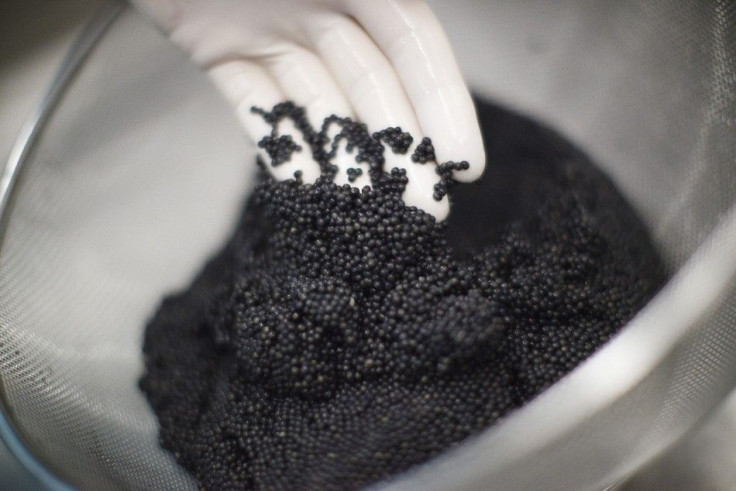Caviar latest treat on Swiss luxury menu

Dressed in a surgeon's white garb, Caviar Meister Tobias Felix slits open the slimy, grey skin of the sturgeon on the table in front of him to reveal Switzerland's latest luxury delicacy.
Costing up to 1,275 Swiss francs ($1,400) for 250 grams, Oona -- meaning extraordinary in Celtic -- is the name of the Alpine country's first Swiss caviar.
The product came about thanks to a brainwave by engineer Peter Hufschmied who decided to use the mountain stream that tumbles out of the North end of the Loetschberg railway tunnel with a temperature of 20 degrees Celsius to breed fish that thrive in warm water.
Some 35,000 Siberian sturgeon were released into the balmy waters six years ago and have produced some 300 kg of caviar for the Winter 2011/2012 season.
Switzerland has the second highest proportion of millionaire households worldwide, at 9.9 percent, according to the Boston Consulting Group and is also one of the world's top consumers of caviar per capita.
The fish farm in Frutigen in the Bernese Oberland plans to grow its shoal to 60,000 sturgeon, making it possible to produce
three tonnes of caviar annually, of which two tonnes will be dedicated for export.
We've already received enquiries from Russia, Hong Kong and Abu Dhabi, said Andreas Schmid, head of marketing and sales at Oona. It's partly to do with the fact that Switzerland has a reputation for good quality.
BLACK GOLD
In the caviar laboratories, chilled to between four and seven degrees Celsius, the delicacy, synonymous with Russian tsars, is collected entirely by hand.
First the sturgeon are scanned using ultra-sound technology to check that the roe (eggs) are ripe and ready for consumption. Once the sac of eggs is removed from the fish, Felix rubs the mass over a metal sieve-like bowl to separate them from the membrane and remove traces of blood.
It's a bit like washing gold, only its black, said Felix, Switzerland's only Caviar-Meister, who says he never tires of sampling the delicacy. It's great. I get paid to eat caviar every day.
Then a large pair of tweezers is used to pick out any eggs that are discolored. A fine, powder salt is added to the caviar to draw out the moisture, and make it glisten like black pearls.
Oona is sold as four different grades of caviar. No. 101 -- the best quality caviar -- contains eggs handpicked by Felix to have a minimum diameter of 2.6 mm and is around just five percent of the total caviar produced. A 30 gram tin costs 215 Swiss francs.
Since one kilogram of caviar typically contains between 60,000 and 75,000 eggs, a teaspoon-full of ten eggs, each measuring little more than a couple of millimeters, costs around 1 Swiss franc ($1.08), positioning Oona towards the upper-end of caviar brands. ($1 = 0.9238 Swiss francs)
© Copyright Thomson Reuters 2024. All rights reserved.





















